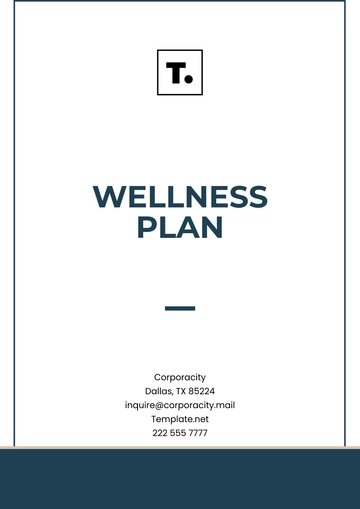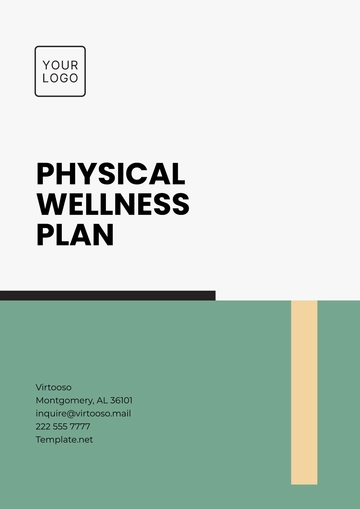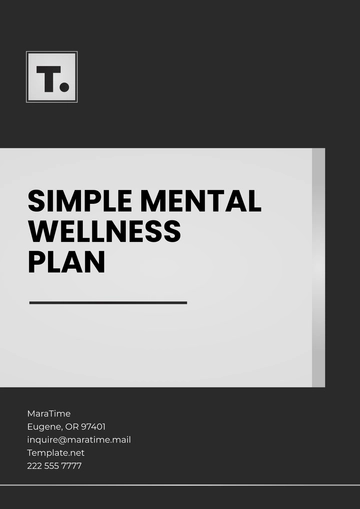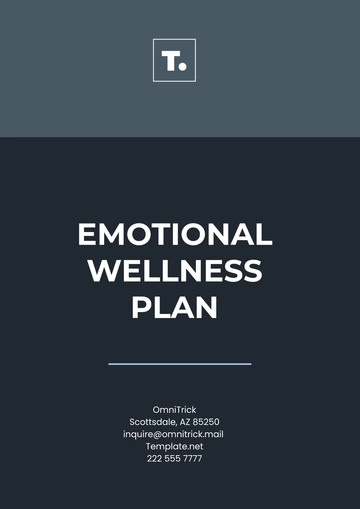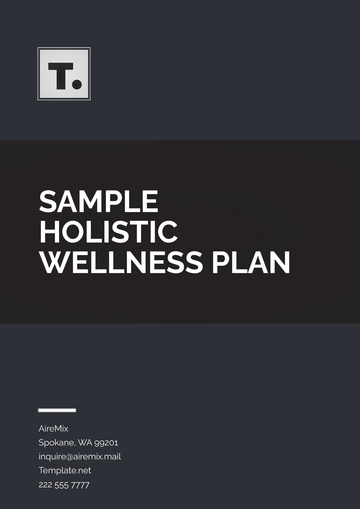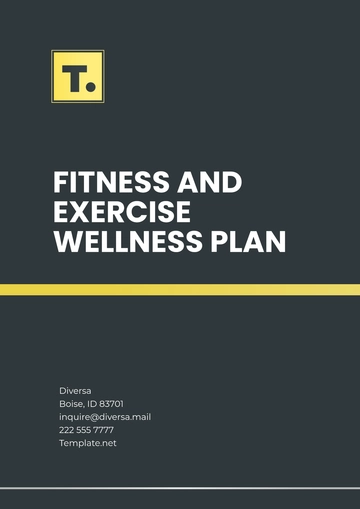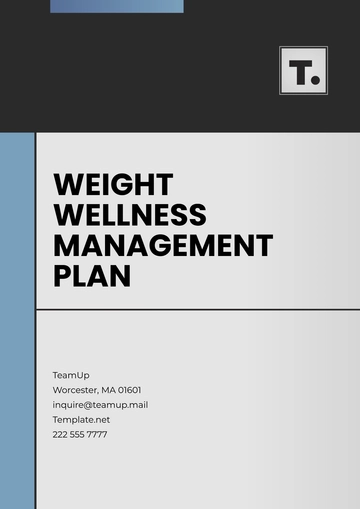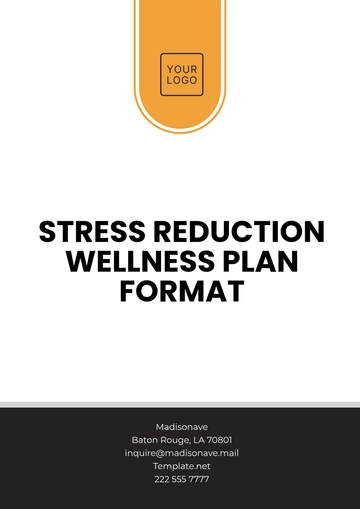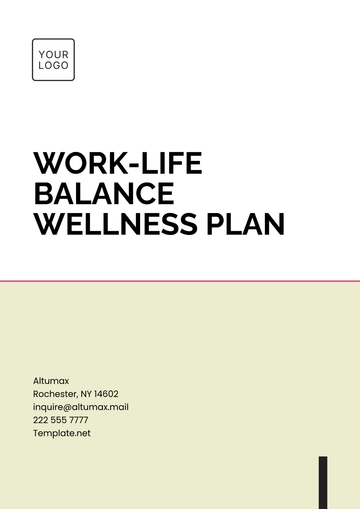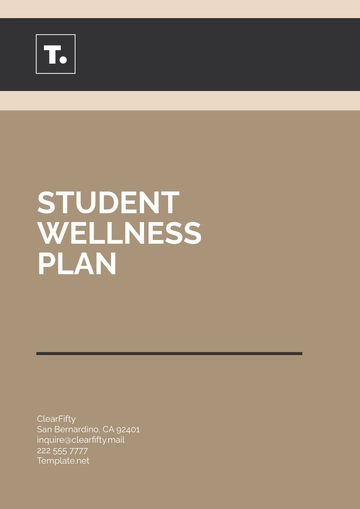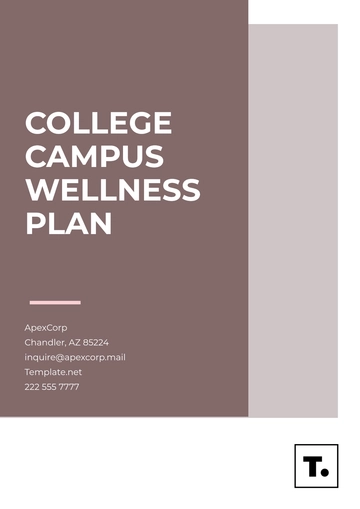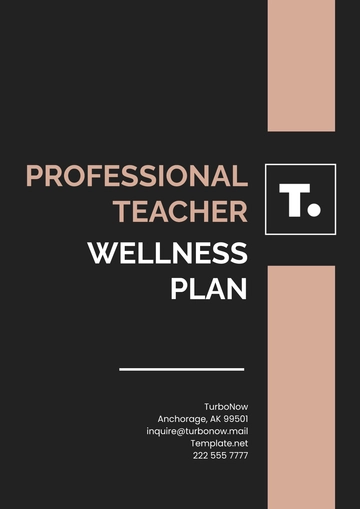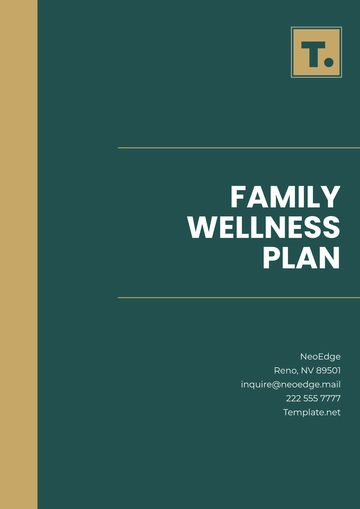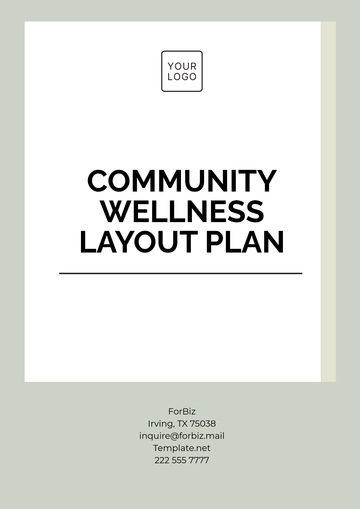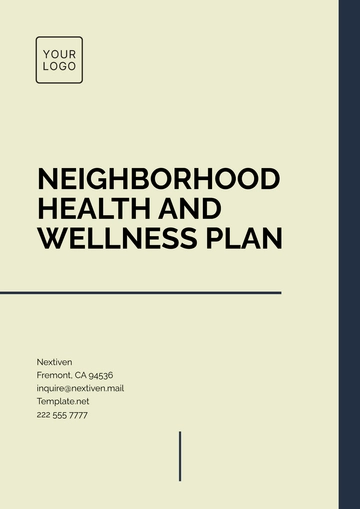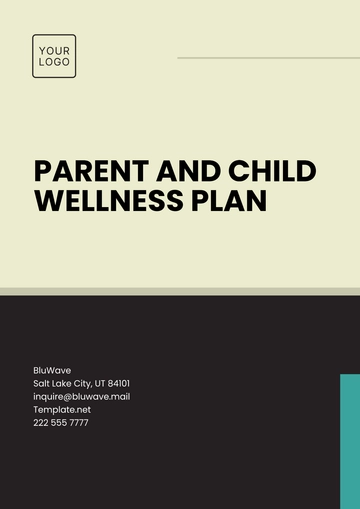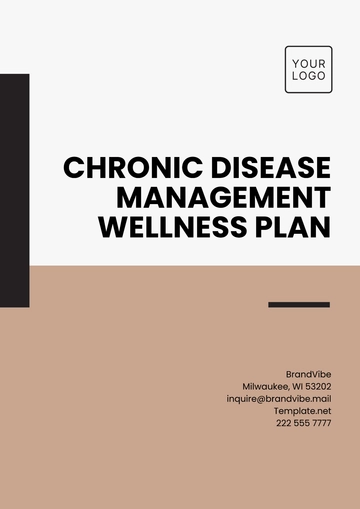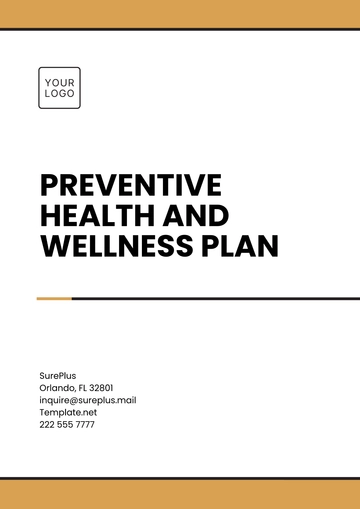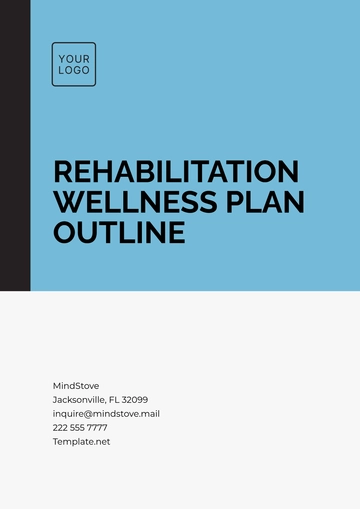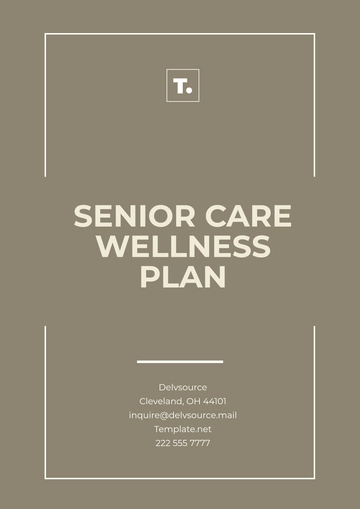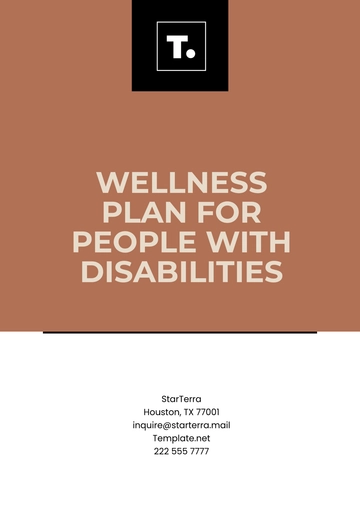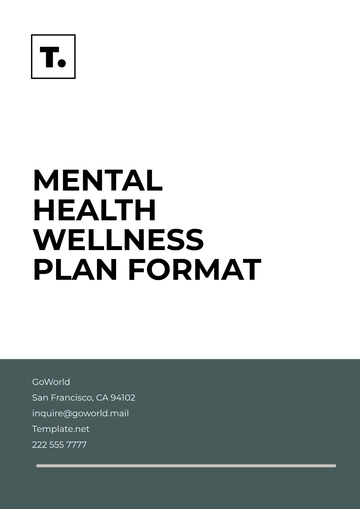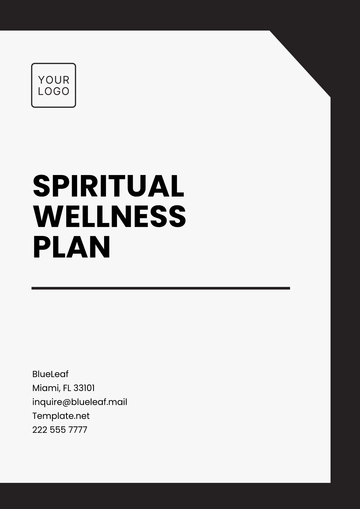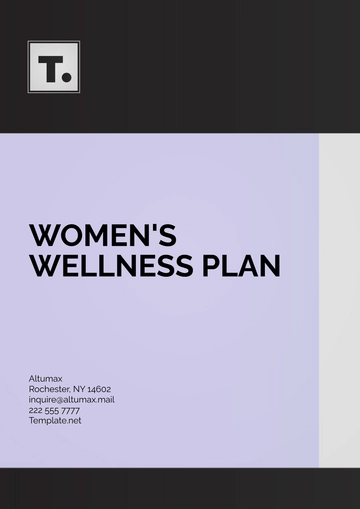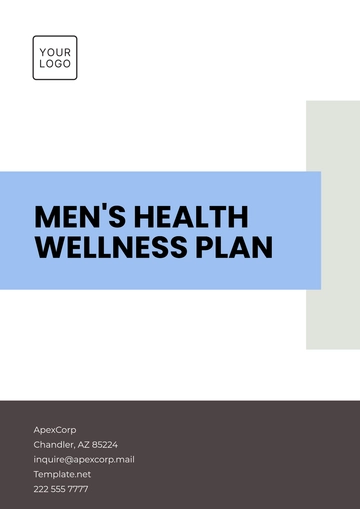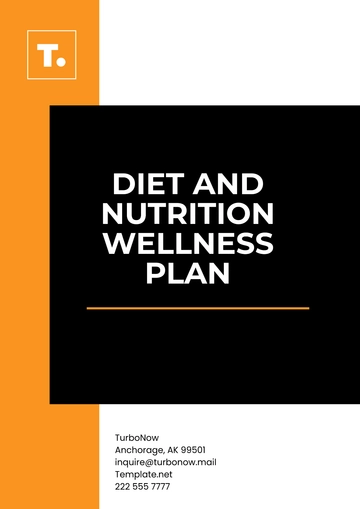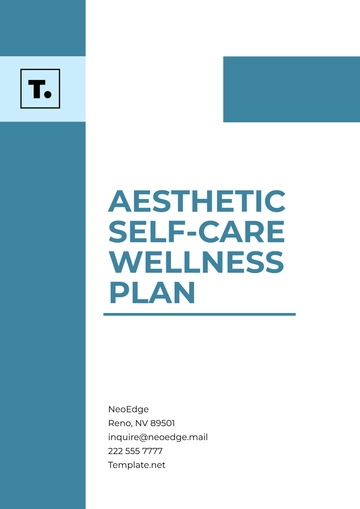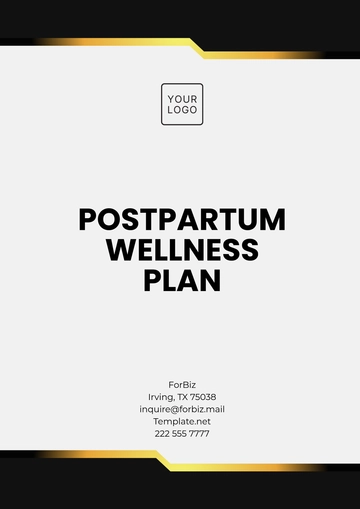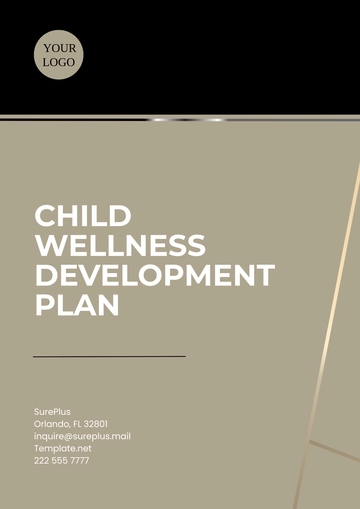Free Postpartum Wellness Plan
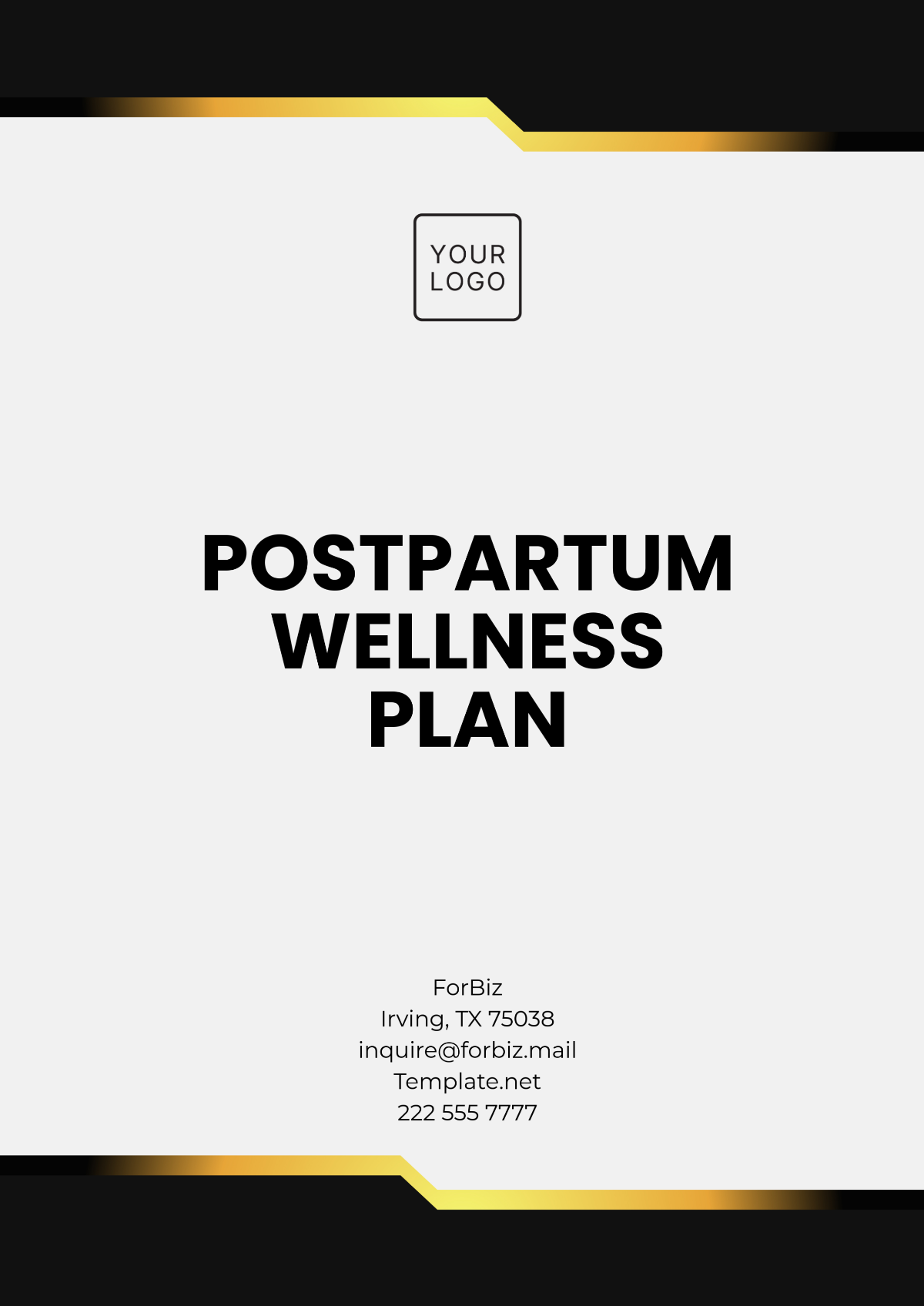
Prepared by: [Your Name]
Company: [Your Company Name]
Date: [Insert Date]
I. Introduction
The postpartum period is a crucial time in a woman's life, as it involves both physical and emotional recovery after childbirth. This Postpartum Wellness Plan is designed to support new mothers in their journey of healing and self-care, guiding physical recovery, mental health, nutrition, and overall wellness during this transformative time.
The plan focuses on a holistic approach to recovery, helping mothers regain their strength, foster emotional well-being, and establish a sustainable routine that supports both their needs and the needs of their newborn.
II. Objectives
Promote Physical Recovery
Focus on physical healing, including recovery from childbirth, returning to pre-pregnancy fitness levels, and addressing common postpartum issues such as pelvic floor health and abdominal separation.Support Mental Health
Address emotional wellness by providing tools to manage postpartum anxiety, depression, and stress, while also fostering a healthy emotional connection with the newborn.Encourage Rest and Sleep
Provide strategies for managing fatigue and establishing healthy sleep habits for both mother and baby.Provide Nutritional Guidance
Recommend balanced meals to support postpartum recovery, energy levels, and breastfeeding.Create a Sustainable Wellness Routine
Help mothers establish a balanced routine that incorporates self-care, exercise, and social connections for long-term wellness.
III. Key Components of the Plan
A. Physical Recovery and Fitness
Strategies:
Rest and Recovery:
Encourage a period of rest during the first 6-8 weeks postpartum, particularly if there are any complications during childbirth.
Support pelvic floor healing by recommending pelvic floor exercises (e.g., Kegel exercises) to strengthen muscles and reduce the risk of incontinence.
Abdominal Recovery:
Introduce gentle exercises to aid in the healing of abdominal muscles, especially after diastasis recti (abdominal separation).
Focus on core-strengthening exercises that are safe during the postpartum period.
Gradual Exercise Routine:
Begin with light activities such as walking or stretching, then progress to more strenuous activities as the body recovers.
Advise the introduction of low-impact workouts (e.g., yoga, pilates) once approved by a healthcare provider.
Body Awareness:
Emphasize good posture and body mechanics to avoid strain, particularly when holding or breastfeeding the baby.
B. Mental Health and Emotional Wellness
Strategies:
Mindfulness and Stress Reduction:
Introduce mindfulness practices such as deep breathing exercises, meditation, or yoga to promote relaxation and reduce stress.
Suggest journaling as a tool for processing emotions and reflecting on the postpartum experience.
Support for Postpartum Depression and Anxiety:
Educate on the signs of postpartum depression (PPD) and anxiety, and provide resources for professional help if needed (e.g., therapy, support groups).
Encourage open communication with loved ones and healthcare providers about emotional well-being.
Build a Support System:
Suggest joining postpartum support groups, either in person or online, to connect with other new mothers and share experiences.
Encourage involving family and friends to provide emotional and practical support during the postpartum period.
C. Sleep and Rest Strategies
Strategies:
Sleep Hygiene:
Encourage establishing a consistent sleep routine, with regular bedtimes and restful sleep environments for both mother and baby.
Suggest practices like co-sleeping or safe sleep practices for newborns to maximize sleep.
Rest During the Day:
Recommend naps or breaks during the day to replenish energy, especially if nighttime sleep is interrupted.
Encourage asking for help with household chores or baby care to allow for more rest.
D. Nutrition and Hydration
Strategies:
Balanced Diet for Recovery:
Recommend nutrient-dense foods, focusing on fruits, vegetables, lean proteins, whole grains, and healthy fats to aid physical recovery and maintain energy levels.
Suggest foods rich in iron and calcium to replenish postpartum nutrient stores.
Breastfeeding Support:
Provide tips for maintaining hydration and promoting milk supply, including drinking plenty of water, consuming lactation-friendly foods (e.g., oats, almonds), and nursing frequently.
Supplements:
Advise taking postpartum vitamins or supplements as recommended by a healthcare provider, particularly for vitamin D, calcium, and omega-3 fatty acids.
Hydration:
Emphasize the importance of staying hydrated, especially for breastfeeding mothers.
E. Establishing a Postpartum Wellness Routine
Strategies:
Self-Care Practices:
Suggest regular self-care practices, such as skincare routines, massages, and relaxing baths, to nurture the body and mind.
Promote hobbies or personal time to recharge mentally and emotionally, which is essential for well-being.
Exercise and Movement:
Gradually increase physical activity over time to rebuild strength and stamina while respecting the body’s limitations.
Recommend incorporating baby-wearing or walking with the stroller as gentle exercise options.
Social Connections:
Encourage mothers to reconnect with friends or family members and engage in social activities for emotional support.
Suggest attending mother-and-baby classes or playgroups to build a sense of community.
IV. Implementation Timeline
Phase 1 (Weeks 1-4):
Focus on rest, physical recovery, and adjusting to newborn care.
Begin gentle pelvic floor exercises and basic stretching.
Support emotional well-being with mindfulness, journaling, and stress management techniques.
Establish a basic nutrition plan and emphasize hydration.
Phase 2 (Weeks 5-8):
Gradually introduce light exercise routines (e.g., walking, postnatal yoga).
Continue pelvic floor strengthening and abdominal recovery exercises.
Encourage connection with a support network (family, therapy, groups).
Expand the nutrition plan with a focus on breastfeeding and energy-boosting meals.
Phase 3 (Weeks 9-12):
Reassess fitness progress and increase activity levels.
Encourage further self-care practices and explore personal hobbies.
Implement more structured wellness routines (e.g., daily exercise, and consistent sleep hygiene).
Ongoing:
Monitor emotional well-being and continue refining routines as needed.
Provide ongoing support through check-ins or follow-up sessions.
V. Monitoring and Evaluation
A. Key Performance Indicators (KPIs):
Improvement in physical recovery, such as reduced pelvic pain or increased energy.
Positive emotional progress, evidenced by reduced feelings of anxiety or depression.
Enhanced quality of sleep and increased restfulness.
Consistency in implementing self-care, fitness, and nutrition routines.
B. Evaluation Methods:
Regular check-ins via surveys or personal consultations to track progress and provide adjustments.
Encourage journaling or self-reflection on physical, emotional, and social wellness.
VI. Resources and Tools
Physical Recovery Tools:
Provide recommendations for pelvic floor trainers, yoga mats, or fitness programs.
Mental Health Resources:
List local support groups, online communities, and therapy resources for postpartum mental health.
Nutrition Guides:
Provide meal planning tips, recipes, and breastfeeding support materials.
Mobile Apps:
Recommend apps for tracking wellness routines (e.g., sleep, exercise, mood).
VII. Sustainability and Long-Term Maintenance
Encourage regular assessments of physical and emotional health and adjust routines as needed.
Promote continued self-care practices and provide support as mothers transition from postpartum to their new role as parents.
Suggest connecting with local parenting groups or wellness communities for sustained support.
VIII. Conclusion
The Postpartum Wellness Plan is designed to offer new mothers a holistic and sustainable approach to physical recovery, emotional health, and overall well-being. By incorporating exercise, self-care, proper nutrition, and emotional support, the plan encourages long-term wellness during the critical postpartum period. With the right resources and support, new mothers can successfully navigate the challenges of postpartum recovery while building a strong foundation for their health and happiness.
- 100% Customizable, free editor
- Access 1 Million+ Templates, photo’s & graphics
- Download or share as a template
- Click and replace photos, graphics, text, backgrounds
- Resize, crop, AI write & more
- Access advanced editor
You may also like
- Finance Plan
- Construction Plan
- Sales Plan
- Development Plan
- Career Plan
- Budget Plan
- HR Plan
- Education Plan
- Transition Plan
- Work Plan
- Training Plan
- Communication Plan
- Operation Plan
- Health And Safety Plan
- Strategy Plan
- Professional Development Plan
- Advertising Plan
- Risk Management Plan
- Restaurant Plan
- School Plan
- Nursing Home Patient Care Plan
- Nursing Care Plan
- Plan Event
- Startup Plan
- Social Media Plan
- Staffing Plan
- Annual Plan
- Content Plan
- Payment Plan
- Implementation Plan
- Hotel Plan
- Workout Plan
- Accounting Plan
- Campaign Plan
- Essay Plan
- 30 60 90 Day Plan
- Research Plan
- Recruitment Plan
- 90 Day Plan
- Quarterly Plan
- Emergency Plan
- 5 Year Plan
- Gym Plan
- Personal Plan
- IT and Software Plan
- Treatment Plan
- Real Estate Plan
- Law Firm Plan
- Healthcare Plan
- Improvement Plan
- Media Plan
- 5 Year Business Plan
- Learning Plan
- Marketing Campaign Plan
- Travel Agency Plan
- Cleaning Services Plan
- Interior Design Plan
- Performance Plan
- PR Plan
- Birth Plan
- Life Plan
- SEO Plan
- Disaster Recovery Plan
- Continuity Plan
- Launch Plan
- Legal Plan
- Behavior Plan
- Performance Improvement Plan
- Salon Plan
- Security Plan
- Security Management Plan
- Employee Development Plan
- Quality Plan
- Service Improvement Plan
- Growth Plan
- Incident Response Plan
- Basketball Plan
- Emergency Action Plan
- Product Launch Plan
- Spa Plan
- Employee Training Plan
- Data Analysis Plan
- Employee Action Plan
- Territory Plan
- Audit Plan
- Classroom Plan
- Activity Plan
- Parenting Plan
- Care Plan
- Project Execution Plan
- Exercise Plan
- Internship Plan
- Software Development Plan
- Continuous Improvement Plan
- Leave Plan
- 90 Day Sales Plan
- Advertising Agency Plan
- Employee Transition Plan
- Smart Action Plan
- Workplace Safety Plan
- Behavior Change Plan
- Contingency Plan
- Continuity of Operations Plan
- Health Plan
- Quality Control Plan
- Self Plan
- Sports Development Plan
- Change Management Plan
- Ecommerce Plan
- Personal Financial Plan
- Process Improvement Plan
- 30-60-90 Day Sales Plan
- Crisis Management Plan
- Engagement Plan
- Execution Plan
- Pandemic Plan
- Quality Assurance Plan
- Service Continuity Plan
- Agile Project Plan
- Fundraising Plan
- Job Transition Plan
- Asset Maintenance Plan
- Maintenance Plan
- Software Test Plan
- Staff Training and Development Plan
- 3 Year Plan
- Brand Activation Plan
- Release Plan
- Resource Plan
- Risk Mitigation Plan
- Teacher Plan
- 30 60 90 Day Plan for New Manager
- Food Safety Plan
- Food Truck Plan
- Hiring Plan
- Quality Management Plan
- Wellness Plan
- Behavior Intervention Plan
- Bonus Plan
- Investment Plan
- Maternity Leave Plan
- Pandemic Response Plan
- Succession Planning
- Coaching Plan
- Configuration Management Plan
- Remote Work Plan
- Self Care Plan
- Teaching Plan
- 100-Day Plan
- HACCP Plan
- Student Plan
- Sustainability Plan
- 30 60 90 Day Plan for Interview
- Access Plan
- Site Specific Safety Plan
